MaryAnn Bernal's Blog, page 265
June 26, 2014
19th Century 'Elixir of Long Life' Found
by Rossella Lorenzi
 The elixir of long life is a bitter, alcohol-heavy concoction — if you trust a 150-year-old bottle unearthed at a hotel construction site in New York’s Lower East Side.
The elixir of long life is a bitter, alcohol-heavy concoction — if you trust a 150-year-old bottle unearthed at a hotel construction site in New York’s Lower East Side.
The site, once a German beer garden and music hall called the Atlantic Garden, contained hundreds f liquor bottles dating from as far back as the 1850s.
Among them was a greenish glass vial that was believed to help people cheat death.
Intrigued, the team behind the find at Chrysalis Archaeology tracked down the historic recipe in Germany. They found it in a 19th-century medical guide.
The ingredients included aloe, gentian, rhubarb, Spanish saffron, Zedoary (white turmeric), and one part water to three parts alcohol.
“Many of the ingredients are still used in herbal medicine or as natural remedies,” Alyssa Loorya, the president of Chrysalis, told Discovery News.
Aloe has an anti-inflammatory effect, gentian root and powdered rhubarb help digestion, the Zedoary (white turmeric) spice is said to purify the blood and help cell regeneration, while Spanish saffron is used to treat a number of health conditions, including depression.
With the tiny Elixir of Life bottle held less than an ounce, it’s likely that the bitter potion was taken one drop at a time.
Loorya’s team also unearthed another bottle that contained a popular 19th-century medicinal drink.
It was labeled Dr. Hostetter’s Stomach Bitters and it was indeed bitter.
The drink turned out to contain gentian root, orange peel, cinnamon, anise, coriander seed, cardamom seed, peruvian bark, gum kino, grain alcohol, water and sugar.
“We read Dr. Hostetter’s was so popular that it was served by the glass in bars throughout the U.S., including Alaska,” Loorya said.
Since both the Elixir of Life and Dr. Hostetter’s formulas required copious amounts of alcohol as a medium, “it may have been difficult for consumers to determine whether the active ingredients were actually effective,” Loorya added.
To discover the drinks’ actual taste and effects, Chrysalis is planning to brew them by the end of the month.
“We’re hoping to have a tasting party,” Loorya said.
Meanwhile, it is possible to find the “miracolous” recipes on DNAinfo.
Image: The vial containing the Elixir of Long life (left) and the bottle containing Dr Hostetter’s Stomach Bitters (right). Credit: Chrysalis Archaeology.
http://news.discovery.com/history/archaeology/19th-century-elixir-of-long-life-found-140624.htm

 The elixir of long life is a bitter, alcohol-heavy concoction — if you trust a 150-year-old bottle unearthed at a hotel construction site in New York’s Lower East Side.
The elixir of long life is a bitter, alcohol-heavy concoction — if you trust a 150-year-old bottle unearthed at a hotel construction site in New York’s Lower East Side.The site, once a German beer garden and music hall called the Atlantic Garden, contained hundreds f liquor bottles dating from as far back as the 1850s.
Among them was a greenish glass vial that was believed to help people cheat death.
Intrigued, the team behind the find at Chrysalis Archaeology tracked down the historic recipe in Germany. They found it in a 19th-century medical guide.
The ingredients included aloe, gentian, rhubarb, Spanish saffron, Zedoary (white turmeric), and one part water to three parts alcohol.
“Many of the ingredients are still used in herbal medicine or as natural remedies,” Alyssa Loorya, the president of Chrysalis, told Discovery News.
Aloe has an anti-inflammatory effect, gentian root and powdered rhubarb help digestion, the Zedoary (white turmeric) spice is said to purify the blood and help cell regeneration, while Spanish saffron is used to treat a number of health conditions, including depression.
With the tiny Elixir of Life bottle held less than an ounce, it’s likely that the bitter potion was taken one drop at a time.
Loorya’s team also unearthed another bottle that contained a popular 19th-century medicinal drink.
It was labeled Dr. Hostetter’s Stomach Bitters and it was indeed bitter.
The drink turned out to contain gentian root, orange peel, cinnamon, anise, coriander seed, cardamom seed, peruvian bark, gum kino, grain alcohol, water and sugar.
“We read Dr. Hostetter’s was so popular that it was served by the glass in bars throughout the U.S., including Alaska,” Loorya said.
Since both the Elixir of Life and Dr. Hostetter’s formulas required copious amounts of alcohol as a medium, “it may have been difficult for consumers to determine whether the active ingredients were actually effective,” Loorya added.
To discover the drinks’ actual taste and effects, Chrysalis is planning to brew them by the end of the month.
“We’re hoping to have a tasting party,” Loorya said.
Meanwhile, it is possible to find the “miracolous” recipes on DNAinfo.
Image: The vial containing the Elixir of Long life (left) and the bottle containing Dr Hostetter’s Stomach Bitters (right). Credit: Chrysalis Archaeology.
http://news.discovery.com/history/archaeology/19th-century-elixir-of-long-life-found-140624.htm

Published on June 26, 2014 06:36
Iron Age Hillfort Open to Tourists This Summer
By Kelly Dickerson
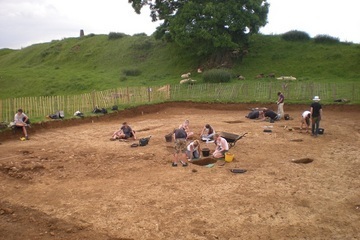
 The 5-year excavation of the hillfort in Leicestershire comes to a close this summer.
The 5-year excavation of the hillfort in Leicestershire comes to a close this summer.
Credit: John Thomas/ University of Leicester
This summer, archaeologists are welcoming tourists to explore an ancient British hillfort full of prehistoric artifacts, as the researchers wrap up an excavation at the site.
The fort, called Burrough Hill, was carved into the side of a 690-foot (210 meters) mound in the modern-day English county of Leicestershire during the Iron Age, around 500 B.C., and was used until the third or fourth century A.D. of the Roman period.
A five-year excavation of the site yielded bones, jewelry, pottery and even game pieces. Archaeologists will open the hillfort to visitors on June 29, hosting guided tours that allow people to touch some of the artifacts, and offering Iron Age combat lessons before the dig comes to a close at the end of the summer
Last year, the team discovered a collection of stone tools and pottery that dates back to 2800 B.C. In the final stage of the excavation, archaeologists will investigate what they believe could be a second entrance into the fort.
"We have been surprised by the quantity and quality of the information we have uncovered," John Thomas, co-director of the excavation and archaeologist at the University of Leicester, in England, said in a statement. "It has really painted a new picture of life at Burrough Hill and helped to fit the hillfort into a wider view of Iron Age life across the county that we have steadily developed through other excavations over several decades."
Historians believe most hillforts were built to protect against Roman invaders. The whole fort system discovered at Borough Hill spans 523,000 square feet (48,600 square meters) and includes several ramparts that stand 10 feet (3 m) tall. After the Iron Age, the fort was abandoned as a defense post and then used as a farmstead. Later, it hosted a large medieval festival.
The team of archaeologists hopes the discovery of artifacts, such as pottery and quern stones used for grinding corn, will shed light on the lives of humans living in the Iron Age and help historians better understand the transition from the Iron Age into the Roman period.
The University of Leicester uses the large excavation site at Burrough Hill as a dig training site for archaeology students. The site has been designated a scheduled monument, which in the United Kingdom means it is protected and cannot be changed without government permission.
http://www.livescience.com/46493-english-iron-age-hillfort-dig.html


 The 5-year excavation of the hillfort in Leicestershire comes to a close this summer.
The 5-year excavation of the hillfort in Leicestershire comes to a close this summer. Credit: John Thomas/ University of Leicester
This summer, archaeologists are welcoming tourists to explore an ancient British hillfort full of prehistoric artifacts, as the researchers wrap up an excavation at the site.
The fort, called Burrough Hill, was carved into the side of a 690-foot (210 meters) mound in the modern-day English county of Leicestershire during the Iron Age, around 500 B.C., and was used until the third or fourth century A.D. of the Roman period.
A five-year excavation of the site yielded bones, jewelry, pottery and even game pieces. Archaeologists will open the hillfort to visitors on June 29, hosting guided tours that allow people to touch some of the artifacts, and offering Iron Age combat lessons before the dig comes to a close at the end of the summer
Last year, the team discovered a collection of stone tools and pottery that dates back to 2800 B.C. In the final stage of the excavation, archaeologists will investigate what they believe could be a second entrance into the fort.
"We have been surprised by the quantity and quality of the information we have uncovered," John Thomas, co-director of the excavation and archaeologist at the University of Leicester, in England, said in a statement. "It has really painted a new picture of life at Burrough Hill and helped to fit the hillfort into a wider view of Iron Age life across the county that we have steadily developed through other excavations over several decades."
Historians believe most hillforts were built to protect against Roman invaders. The whole fort system discovered at Borough Hill spans 523,000 square feet (48,600 square meters) and includes several ramparts that stand 10 feet (3 m) tall. After the Iron Age, the fort was abandoned as a defense post and then used as a farmstead. Later, it hosted a large medieval festival.
The team of archaeologists hopes the discovery of artifacts, such as pottery and quern stones used for grinding corn, will shed light on the lives of humans living in the Iron Age and help historians better understand the transition from the Iron Age into the Roman period.
The University of Leicester uses the large excavation site at Burrough Hill as a dig training site for archaeology students. The site has been designated a scheduled monument, which in the United Kingdom means it is protected and cannot be changed without government permission.
http://www.livescience.com/46493-english-iron-age-hillfort-dig.html

Published on June 26, 2014 06:29
4,000-Year-Old Burial with Chariots Discovered in South Caucasus
By Owen Jarus
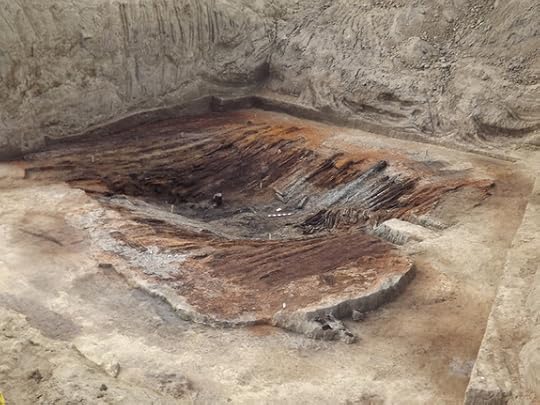 Here, the roof of a 4,000-year-old burial chamber buried in a Kurgan (mound) in the country of Georgia.
Here, the roof of a 4,000-year-old burial chamber buried in a Kurgan (mound) in the country of Georgia.
Credit: Photo courtesy Zurab Makharadze
An ancient burial containing chariots, gold artifacts and possible human sacrifices has been discovered by archaeologists in the country of Georgia, in the south Caucasus.The burial site, which would've been intended for a chief, dates back over 4,000 years to a time archaeologists call the Early Bronze Age, said Zurab Makharadze, head of the Centre of Archaeology at the Georgian National Museum.Archaeologists discoveredthe timber burial chamber within a 39-foot-high (12 meters) mound called a kurgan. When the archaeologists reached the chamber they found an assortment of treasures, including two chariots, each with four wooden wheelsThe team discovered ornamented clay and wooden vessels, flint and obsidian arrowheads, leather and textile artifacts, a unique wooden armchair, carnelian and amber beads and 23 golden artifacts, including rare and artistic crafted jewelry, wrote Makharadze in the summary of a presentation he gave recently at the International Congress on the Archaeology of the Ancient Near East, held at the University of Basel in Switzerland."In the burial chamber were placed two four-wheeled chariots, both in good condition, [the] design of which represents fine ornamental details of various styles," Makharadze wrote. Thechamber also contained wild fruits, he added.
While the human remains had been disturbed by a robbery, which probably occurred in ancient times, and were in a disordered position, the archaeologists found that seven people were buried in the chamber. "One of them was a chief and others should be the members of his family, sacrificed slaves or servants," Makharadze told Live Science in an email.
A time before the horse
The burial dates back to a time before domesticated horses appeared in the area, Makharadze said. While no animals were found buried with the chariots, he said, oxen would have pulled them.
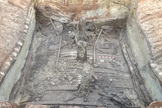
[image error] Credit: Photo courtesy Zurab Makharadze, cropped by Owen Jarus
Credit: Photo courtesy Zurab Makharadze, cropped by Owen Jarus
View full size imageOther rich kurgan burials dating to the second half of the third millennium B.C. have also been found in the south Caucasus,said Makharadze in another paper he presented in February at the College de France in Paris. The appearance of these rich burials appears to be connected to interactions that occurred between nomadic people from the Eurasian steppes and farming communities within and near the south Caucasus, Makharadze said.
These interactions appear to have led to some individuals, like this chief, getting elaborate burials. The newly discovered armchair symbolizes the power that individuals like the chief had. "The purpose of the wooden armchair was the indication to power, and it was put in the kurgan as a symbol of power," Makharadze said in the email.
The kurgan was found in eastern Georgia near the municipality of Lagodekhi and was excavated in 2012.
http://www.livescience.com/46513-ancient-chariot-burial-discovered.html#
 Here, the roof of a 4,000-year-old burial chamber buried in a Kurgan (mound) in the country of Georgia.
Here, the roof of a 4,000-year-old burial chamber buried in a Kurgan (mound) in the country of Georgia.Credit: Photo courtesy Zurab Makharadze
An ancient burial containing chariots, gold artifacts and possible human sacrifices has been discovered by archaeologists in the country of Georgia, in the south Caucasus.The burial site, which would've been intended for a chief, dates back over 4,000 years to a time archaeologists call the Early Bronze Age, said Zurab Makharadze, head of the Centre of Archaeology at the Georgian National Museum.Archaeologists discoveredthe timber burial chamber within a 39-foot-high (12 meters) mound called a kurgan. When the archaeologists reached the chamber they found an assortment of treasures, including two chariots, each with four wooden wheelsThe team discovered ornamented clay and wooden vessels, flint and obsidian arrowheads, leather and textile artifacts, a unique wooden armchair, carnelian and amber beads and 23 golden artifacts, including rare and artistic crafted jewelry, wrote Makharadze in the summary of a presentation he gave recently at the International Congress on the Archaeology of the Ancient Near East, held at the University of Basel in Switzerland."In the burial chamber were placed two four-wheeled chariots, both in good condition, [the] design of which represents fine ornamental details of various styles," Makharadze wrote. Thechamber also contained wild fruits, he added.
While the human remains had been disturbed by a robbery, which probably occurred in ancient times, and were in a disordered position, the archaeologists found that seven people were buried in the chamber. "One of them was a chief and others should be the members of his family, sacrificed slaves or servants," Makharadze told Live Science in an email.
A time before the horse
The burial dates back to a time before domesticated horses appeared in the area, Makharadze said. While no animals were found buried with the chariots, he said, oxen would have pulled them.

[image error]
 Credit: Photo courtesy Zurab Makharadze, cropped by Owen Jarus
Credit: Photo courtesy Zurab Makharadze, cropped by Owen JarusView full size imageOther rich kurgan burials dating to the second half of the third millennium B.C. have also been found in the south Caucasus,said Makharadze in another paper he presented in February at the College de France in Paris. The appearance of these rich burials appears to be connected to interactions that occurred between nomadic people from the Eurasian steppes and farming communities within and near the south Caucasus, Makharadze said.
These interactions appear to have led to some individuals, like this chief, getting elaborate burials. The newly discovered armchair symbolizes the power that individuals like the chief had. "The purpose of the wooden armchair was the indication to power, and it was put in the kurgan as a symbol of power," Makharadze said in the email.
The kurgan was found in eastern Georgia near the municipality of Lagodekhi and was excavated in 2012.
http://www.livescience.com/46513-ancient-chariot-burial-discovered.html#

Published on June 26, 2014 06:23
Strange Stone Spheres Top List of New World Heritage Spots
 By Stephanie Pappas
By Stephanie PappasMysterious stone spheres dot the Pre-Colombian Chiefdom Settlements of the Diquis in Costa Rica, which is now a World Heritage site.
Credit: © Museo Nacional de Costa Rica / Juan Julio Rojas
Enigmatic archaeological sites in Costa Rica dotted with mysterious stone spheres are among six new spots newly designated as UNESCO World Heritage Sites.
The stone sphere sites, on the Diquis Delta in southern Costa Rica, join places like the Great Wall of China and Yellowstone National Park on the list of 1,007 sites designated as World Heritage Sites by the United Nations Educational, Scientific and Cultural Organization (UNESCO). The organization lists places that are "of outstanding universal value," based on criteria such as representing a masterpiece of creative genius, recording testimony of a vanished civilization, or containing exceptional natural beauty.
The U.N.'s World Heritage Committee, currently meeting in Doha, Qatar, announced the additions to the list today (June 23). Other than the Diquis Delta sites, the new honorees include the architectural remnants of a medieval Eurasian city, spectacular landscapes in Vietnam and India, a wildlife sanctuary in the Philippines and a site offering geological evidence of the meteorite collision that killed off the dinosaurs
The new sites are:
1. Bolgar Historical and Archaeological Complex, the Russian Federation: Along the banks of the Volga River, south of Kazan, Tatarstan, is an archaeological site containing the remnants of the medieval city of Bolgar. Built in the seventh century by a civilization called the Volga-Bolgars, Bolgar remained an important town until the 15th century, according to UNESCO. In the 1200s, it was the capital of the Golden Horde, the northwestern region of the Mongol Empire. The Volga-Bolgars converted to Islam in A.D. 922, and the site remains a destination for pilgrimages by Tatar Muslims today.
2. Pre-Colombian Chiefdom Settlements with Stone Spheres of the Diquis, Costa Rica: Consisting of four archaeological sites in the Diquis Delta, this new site encompasses the archaeological remains of human civilization before Europeans arrived in Costa Rica. The sites date to between A.D. 500 and 1500 and include burial sites, paved areas and mounds, according to UNESCO. Most intriguing, however, are the stone spheres that dot the sites. These spheres range in size from 2.3 feet to 8.4 feet (0.7 to 2.57 meters) in diameter, and many remain in the locations where they were placed centuries ago. No one knows how the stones were made — or why. [The 7 Most Mysterious Archaeological Finds on Earth]
3. Trang An Scenic Landscape Complex, Vietnam: The stunning landscape on the south side of the Red River delta in Vietnam earned this area a place on the UNESCO list. Dramatic limestone peaks and mountainside caves define this region of so-called karst topography. (Karst landscapes are formed when easily dissolvable rocks such as limestone erode into impressive shapes, typically pockmarked with caves.) The caves contain artifacts of human settlement dating back 30,000 years. Today, the site also includes Hoa Lu, the capital of Vietnam in the 10th and 11th centuries, as well as villages, temples and farms.
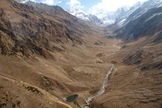 [image error]
[image error]
 The Great Himalayan National Park in the Indian state of Himachal Pradesh was inscribed in June 2014 as a World Heritage site.
The Great Himalayan National Park in the Indian state of Himachal Pradesh was inscribed in June 2014 as a World Heritage site.Credit: © IUCN/Graeme WorboysView full size image4. Great Himalayan National Park, India: This national park in the Indian state of Himachal Pradesh is rich in both beauty and biodiversity. Located in the western Himalayan Mountains, the park's landscapes include low, wet plains, high, dry deserts, mountain peaks and major rivers. Threatened species, including the endangered snow leopard and red-headed vulture, call this park home. This site is extremely important for biodiversity conservation, according to UNESCO.
5. Mount Hamiguitan Range Wildlife Sanctuary, Philippines: The iconic Philippine eagle and the striking white-and-red Philippine cockatoo make their homes in this species-rich sanctuary, which runs north-south along the Pujada Peninsula of the Philippines. At least 11 endangered vertebrates live in the range, along with dozens of species that can be found nowhere else on Earth.
6. Stevns Klint, Denmark: The striking white chalk cliffs on Denmark's island of Zealand aren't just beautiful. They're paleontological wonders. These cliffs are made of rocks set down at the end of the Cretaceous and the beginning of the Tertiary 65 million years ago. A layer of ash likely marks the spot in time when a meteorite crashed half a world away in Mexico, filling the atmosphere with sun-obscuring dust and probably killing off the dinosaurs. This 9-mile-long (15 km) stretch of cliffs is the longest, best-exposed geological site showing this boundary between eras, according to UNESCO.
In addition to the six new sites, UNESCO expanded three existing World Heritage sites. These expanded regions include the South China Karst site, which will now be 124 acres (50,000 hectares) larger. This site, on the list since 2007, encompasses a stunning karst landscape in four provinces in southern China.
The second extension was granted to the Białowieża Forest on the border of Belarus and Poland, which has been a World Heritage Site since 1979. Here, primary forest provides shelter for the European bison, which was once hunted to extinction in the wild. Now reintroduced, the bison is Europe's largest land animal.
Finally, UNESCO extended the Dutch and German Wadden Sea World Heritage Site, which has been on the list since 2009. This expanse of wetlands and mud flats sits in the southeastern North Sea and is home to hundreds of thousands of birds, as well as seals and other species.
http://www.livescience.com/46485-new-world-heritage-sites-announced.html

Published on June 26, 2014 06:14
History Trivia - Pied Piper leads 130 children out of Hamelin, Germany
June 26,

221 Roman Emperor Elagabalus adopted his cousin Alexander Severus as his heir and received the title of Caesar.

363 Emperor Julian, the last Roman emperor to oppose Christianity, died in Mesopotamia at age 32, while fighting the Persians. General Jovian was proclaimed Emperor by the troops on the battlefield.

684 Pope St. Benedict consecrated. The consecration of Benedict was delayed nearly a year until Byzantine Emperor Constantine IV could approve his election.

1284 the legendary Pied Piper led 130 children out of Hamelin, Germany.

1409 Western Schism: the Roman Catholic church was led into a double schism as Petros Philargos was crowned Pope Alexander V after the Council of Pisa, joining Pope Gregory XII in Rome and Pope Benedict XII in Avignon.

1483 Richard III was crowned king of England after declaring his nephews Edward and Richard illegitimate.

1498 Toothbrush invented


221 Roman Emperor Elagabalus adopted his cousin Alexander Severus as his heir and received the title of Caesar.

363 Emperor Julian, the last Roman emperor to oppose Christianity, died in Mesopotamia at age 32, while fighting the Persians. General Jovian was proclaimed Emperor by the troops on the battlefield.

684 Pope St. Benedict consecrated. The consecration of Benedict was delayed nearly a year until Byzantine Emperor Constantine IV could approve his election.

1284 the legendary Pied Piper led 130 children out of Hamelin, Germany.

1409 Western Schism: the Roman Catholic church was led into a double schism as Petros Philargos was crowned Pope Alexander V after the Council of Pisa, joining Pope Gregory XII in Rome and Pope Benedict XII in Avignon.

1483 Richard III was crowned king of England after declaring his nephews Edward and Richard illegitimate.

1498 Toothbrush invented

Published on June 26, 2014 04:25
June 25, 2014
Diane Turner - London Rocks - 25.06.2014
Published on June 25, 2014 15:10
Mr. Chuckles is Steampunking around The Wizard's Cauldron with author Rae Gee

The Wizard speaks:
Noted author, avant garde thinker, aircraft fancier and fan-favourite Steampunk writer, Rae Gee, a great friend of mine, and of Wizardwatchers since the very beginning, has just released her fourth book and the third book in her terrific "Rise" series
Read more at:
http://greenwizard62.blogspot.co.uk/2014/06/steampunk-scribbler-rae-gee-spoons-and.html

Published on June 25, 2014 05:00
History Trivia - Five Canterbury monks report something exploding on the Moon.
June 25,

253 Pope Cornelius died at Centumcellae where he was exiled during the Christian persecution under Trebonianus Gallus Augustus.

524 The Franks defeated the Burgundians in the Battle of Vézeronce.
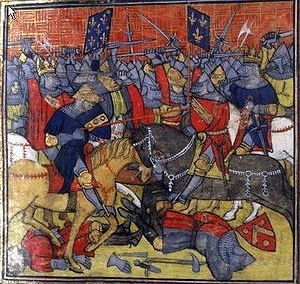
841 In the Battle of Fontenay-en-Puisaye, forces led by Charles the Bald and Louis the German defeated the armies of Lothair I of Italy and Pepin II of Aquitaine.

1134 King Niels of Denmark died.

1178 Five Canterbury monks reported something exploding on the Moon.


253 Pope Cornelius died at Centumcellae where he was exiled during the Christian persecution under Trebonianus Gallus Augustus.

524 The Franks defeated the Burgundians in the Battle of Vézeronce.

841 In the Battle of Fontenay-en-Puisaye, forces led by Charles the Bald and Louis the German defeated the armies of Lothair I of Italy and Pepin II of Aquitaine.

1134 King Niels of Denmark died.

1178 Five Canterbury monks reported something exploding on the Moon.

Published on June 25, 2014 03:49
June 24, 2014
Prehistoric drawings in Chauvet caves in France added to UNESCO world heritage list

PARIS – Drawings of mammoths, human footprints and other art carved on cave walls in southern France about 30,000 years ago have been inscribed on UNESCO's World Heritage list.
The U.N. cultural agency says that the Decorated Cave of Pont d'Arc contains the best preserved figurative drawings in the world.
The agency's World Heritage Committee said in a statement that it added the cave and other sites at a meeting Sunday in Doha.Experts have recorded more than 1,000 images from the walls of the cave, also known as the Grotte Chauvet-Pont d'Arc.
The drawings, among the oldest known human drawings, were unexpectedly discovered in 1994 by researcher Jean-Marie Chauvet in the Ardeche region.
http://www.foxnews.com/travel/2014/06/23/prehistoric-drawings-in-chauvet-caves-in-france-added-to-unesco-world-heritage/

Published on June 24, 2014 08:53
History Trivia - The Aqua Traiana inaugurated by Emperor Trajan
June 24
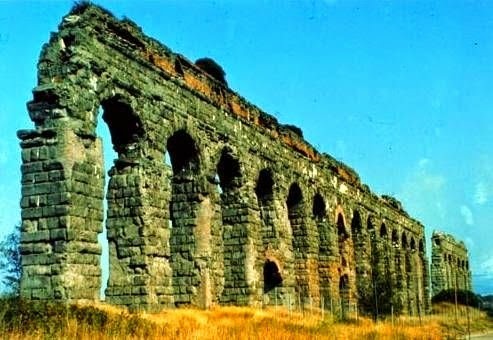
109 The Aqua Traiana was inaugurated by Emperor Trajan, the aqueduct channeled water from Lake Bracciano, 25 miles north-west of Rome.

217 Hannibal defeated the Romans at Lago di Trasimeno in the Second Punic War.

451 Attila the Hun raised his siege of Orleans, France in a prelude to his being pushed out of France by a combined army of Romans and barbarians.
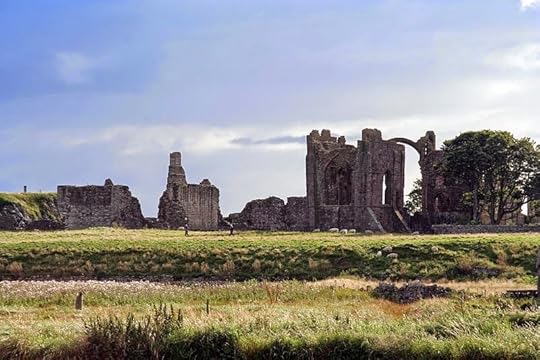
803 Bishop Higbald of Lindisfarne died. In a communiqué to the scholar Alcuin of York (teacher at the Carolingian court at the invitation of Charlemagne), he described in graphic detail the Viking raid on Lindisfarne on 8 January 793 in which many of his monks were killed.

843 Vikings destroyed Nantes (western France).

1374 A sudden outbreak of St. John's Dance (Dancing Plague) caused people in the streets of Aachen, Germany, to experience hallucinations and begin to jump and twitch uncontrollably until they collapsed from exhaustion. One of the most prominent theories is that victims suffered from ergot (fungus) poisoning.


109 The Aqua Traiana was inaugurated by Emperor Trajan, the aqueduct channeled water from Lake Bracciano, 25 miles north-west of Rome.

217 Hannibal defeated the Romans at Lago di Trasimeno in the Second Punic War.

451 Attila the Hun raised his siege of Orleans, France in a prelude to his being pushed out of France by a combined army of Romans and barbarians.

803 Bishop Higbald of Lindisfarne died. In a communiqué to the scholar Alcuin of York (teacher at the Carolingian court at the invitation of Charlemagne), he described in graphic detail the Viking raid on Lindisfarne on 8 January 793 in which many of his monks were killed.

843 Vikings destroyed Nantes (western France).

1374 A sudden outbreak of St. John's Dance (Dancing Plague) caused people in the streets of Aachen, Germany, to experience hallucinations and begin to jump and twitch uncontrollably until they collapsed from exhaustion. One of the most prominent theories is that victims suffered from ergot (fungus) poisoning.

Published on June 24, 2014 03:48




